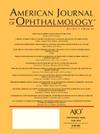在一项随机临床试验中,患者导航员在社区眼科筛查后提高了办公室眼科检查的依从性:纽约视力研究。
IF 4.1
1区 医学
Q1 OPHTHALMOLOGY
引用次数: 0
摘要
目的:评估患者导航员在改善在社区眼科健康筛查和转诊到眼科后进行初始办公室眼科检查的依从性方面的有效性和成本。设计:5年前瞻性、集群随机临床试验。参与者:年龄在40岁及以上的符合条件的个人从曼哈顿上城的经济适用房开发和老年人中心招募。方法:收集人口统计学、健康的社会决定因素、临床特征和获得眼科保健的机会。眼部健康检查包括视力、眼压和眼底摄影。那些被诊断为青光眼、疑似青光眼、视网膜异常、白内障或其他眼部疾病的患者被转介到办公室进行眼科检查,最初的预约由研究人员安排。导航干预的参与者接受了10个月的预约安排支持,常规治疗的参与者没有接受导航帮助。T检验、卡方检验和多变量逐步逻辑回归分析了与初次住院检查依从性相关的因素。在研究的同时进行了成本效益分析。主要结果测量:对转介到眼科的患者,坚持进行最初的眼科检查。结果:在468名转介参与者中,47% (n = 220/468)参加了最初的办公室眼科检查。依从率:导航干预(51.8%)vs常规护理(38.1%)(P = .004)。参加眼科检查的患者平均年龄:70.2±11.3岁;65.5%的女性;46.8%是非裔美国人,47.3%西班牙裔。导航员干预组的参与者与接受常规护理的参与者相比,坚持最初的办公室眼科检查的几率更高(OR = 1.529;95% ci (1.023, 2.285); = 0.038页)。以英语为主要语言的参与者坚持进行首次眼科检查的几率也更高(OR = 1.815;95% ci (1.211, 2721); = 0.004页)。导航员干预组每位参加办公室眼科检查的参与者的费用:24.25美元对33.03美元。结论:在服务不足的人群中,患者导航员在社区眼科健康筛查和转介到眼科后,提高了对办公室眼科检查的依从性。导航员干预导致成本节约,随机分配到导航员干预组的每个参与者的增量成本效益差异减少了8.78美元。本文章由计算机程序翻译,如有差异,请以英文原文为准。
Patient Navigators Improve In-Office Eye Exam Adherence After Community Eye Screenings in a Randomized Clinical Trial: NYC-SIGHT Study
Purpose
To assess the effectiveness and cost of patient navigators in improving adherence to an initial in-office eye exam following community-based eye health screenings and referral to ophthalmology among underserved populations.
Design
5-year prospective, cluster-randomized clinical trial.
Participants
Eligible individuals aged 40 years and older were recruited from affordable housing developments and senior centers in Upper Manhattan.
Methods
Demographics, social determinants of health, clinical characteristics, and access to eye care were collected. Eye health screenings included visual acuity, intraocular pressure, and fundus photography. Those diagnosed with glaucoma, suspected glaucoma, retinal abnormalities, cataracts, or other ocular conditions were referred for in-office eye exams, with initial appointments scheduled by study staff. Navigator Intervention participants received appointment scheduling support for 10 months, Usual Care participants did not receive navigator assistance. T tests, chi-square tests and multivariate stepwise logistic regression analyzed factors associated with adherence. Cost-effectiveness analysis was conducted alongside the study.
Main Outcome Measures
Adherence to the initial in-office eye exam for those referred to ophthalmology.
Results
Of 468 referred participants, 47% (n = 220/468) attended the initial in-office eye exam. Adherence rates: Navigator Intervention (51.8%) versus Usual Care (38.1%). Of those who attended the in-office eye exam, mean age: 70.2 ± 11.3 years; 65.5% female; 46.8% African American, 47.3% Hispanic. Participants in the Navigator Intervention group had higher odds of adhering to the initial in-office eye exam compared to those receiving Usual Care (OR = 1.529; 95% CI (1.023, 2.285)). Participants who spoke English as their primary language also had higher odds of adhering to the initial eye exam (OR = 1.815; 95% CI (1.211, 2721)). Cost per participant in the Navigator Intervention group who attended the in-office eye exam: $24.25 vs. $33.03 per Usual Care participant.
Conclusions
Patient navigators improved adherence to in-office eye exams following community-based eye health screenings and referral to ophthalmology among an underserved population. The Navigator Intervention resulted in cost savings with an incremental cost-effectiveness difference of $8.78 less per participant randomized to the Navigator Intervention group.
求助全文
通过发布文献求助,成功后即可免费获取论文全文。
去求助
来源期刊
CiteScore
9.20
自引率
7.10%
发文量
406
审稿时长
36 days
期刊介绍:
The American Journal of Ophthalmology is a peer-reviewed, scientific publication that welcomes the submission of original, previously unpublished manuscripts directed to ophthalmologists and visual science specialists describing clinical investigations, clinical observations, and clinically relevant laboratory investigations. Published monthly since 1884, the full text of the American Journal of Ophthalmology and supplementary material are also presented online at www.AJO.com and on ScienceDirect.
The American Journal of Ophthalmology publishes Full-Length Articles, Perspectives, Editorials, Correspondences, Books Reports and Announcements. Brief Reports and Case Reports are no longer published. We recommend submitting Brief Reports and Case Reports to our companion publication, the American Journal of Ophthalmology Case Reports.
Manuscripts are accepted with the understanding that they have not been and will not be published elsewhere substantially in any format, and that there are no ethical problems with the content or data collection. Authors may be requested to produce the data upon which the manuscript is based and to answer expeditiously any questions about the manuscript or its authors.

 求助内容:
求助内容: 应助结果提醒方式:
应助结果提醒方式:


